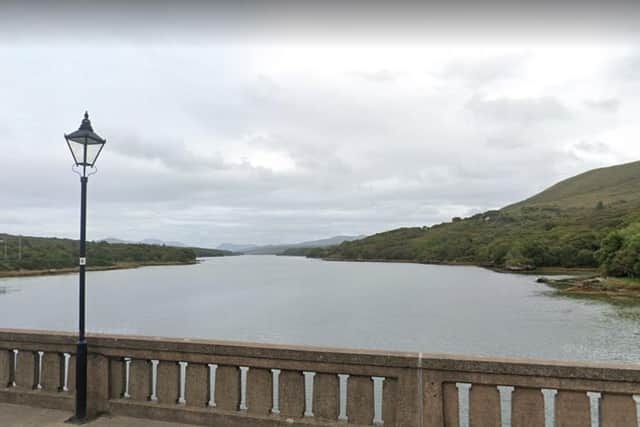2,200 in Donegal on boil water notice following significant spike in water issues countrywide
and live on Freeview channel 276
Eleven per cent (2,266) of a total population of 21,203 people across the 26 Counties still affected by Boil Water Notices or water restrictions at September 28, 2022, were located in Lettermacaward in the Rosses.
Irish Water said the notice arose out of operational difficulties at Lettermacaward Water Treatment Plant and is in place to protect the health of approximately 2,200 customers in the Lettermacaward, Portnoo, Rossbeg, Cleangort, Doochary, Meenacross, Dooey, Glenties Road, Maghery and Falmore areas.
Advertisement
Hide AdAdvertisement
Hide AdSeamus O’Brien, Irish Water’s Asset Operations Lead, said: “We are continuing to work closely with Donegal County Council, the contractor and the HSE to monitor the supply and lift the notice as quickly as it is safe to do so and safeguard the supply for the future.


"Work to service the clarification unit and replace filter media which are integral components of the water treatment process have now been completed. Works to optimise the process is ongoing, with a view to having the notice lifted as quickly as possible.
“Public health is Irish Water’s number one priority, and this Boil Water Notice has been put in place to protect customers following operational issues at the water treatment plant.
“Boil Water Notices are issued to safeguard public health. In all instances immediate action is taken to address the cause of the issue in order to lift the notice as quickly as possible, in agreement with the HSE.”
Advertisement
Hide AdAdvertisement
Hide AdThe Environmental Protection Agency (EPA) has said there was a significant increase in public health interventions last year, as it published its Drinking Water Quality in Public Supplies Report 2021.
The report shows that the quality of drinking water in public supplies remains high, with over 99.7 per cent compliance with bacterial and chemical limits. The continued high levels of water quality being achieved are positive for consumers and indicate that water is safe to drink.
However, there were two ‘significant incidents’ during 2021 at the Gorey (Wexford) and Ballymore Eustace (Kildare) water treatment plants that, the EPA reported, put the health of approximately 885,000 people at risk, with community illness and hospitalisations occurring in the Gorey incident.
The EPA said it instructed Irish Water to implement a number of actions at all supplies, to prevent the reoccurrence of similar issues.
Advertisement
Hide AdAdvertisement
Hide AdAs a result of these actions, more drinking water quality issues were detected and reported, with the number of boil water notices increasing significantly in the last quarter of 2021. The total number of people affected by boil water notices in 2021 was approximately 211,000.
Dr Tom Ryan, EPA Director said: “The serious incidents at Gorey and Ballymore Eustace water treatment plants last year, which resulted in unsafe water being released for consumption, have highlighted Irish Water’s fundamental obligation to ensure our public water supplies are properly operated, and managed, to protect public health. Increased vigilance is needed by Irish Water and Local Authorities in their oversight and management of plant operations to ensure incidents are dealt with appropriately and in a timely manner.
"Boil water notices are affecting an increasing number of consumers and while we recognise the challenges these present to individuals and communities, they are necessary to protect public health. High incidences of boil water notices will remain with us until Irish Water improves the resilience of drinking water plants.”
Irish Water said significant progress has been made in developing systems to improve the management of incidents.
Advertisement
Hide AdAdvertisement
Hide AdIn response to the drinking water quality incidents in Gorey and Ballymore Eustace in 2021, a new National Operations Management Centre has been stood up on a 24/7 basis and so far 56 of the largest drinking water plants in the 26 Counties, catering for a population of 2.85 million people, have been connected.
Margaret Attridge of Irish Water said: “The EPA Drinking Water Report shows that the quality of Ireland’s drinking water supplies continues to improve. We have increased investment in our drinking water services year on year, and this is reaping big benefits for all our customers nationwide, giving them the assurance that, when they turn out their tap, they can enjoy clean, safe drinking water.
“We recognise of course that challenges remain in some areas and we have prioritised our efforts in addressing these. In particular our enhanced focus on monitoring and testing supplies allows us to identify problems early and take action to fix them and, where appropriate, notify the public of any risks to their drinking water.
"It will take a number of years and high levels of investment to bring our public water supply to the standard we all strive for but we are confident that we are on track to achieve this. Public health is our top priority and we will continue to work in partnership with our stakeholders, including the EPA, to ensure world class drinking water supplies for all our customers.”
Advertisement
Hide AdAdvertisement
Hide AdIrish Water points out that in 2021, it invested over €460 million in water treatment plants and networks, with 12 water treatment plants built or upgraded and an additional 39 sites upgraded under the National Disinfection Programme.
It notes the latest Drinking Water Report published by the EPA shows that Ireland’s public water supplies are safe to drink, with 99.7% compliance with microbiological and chemical standards.